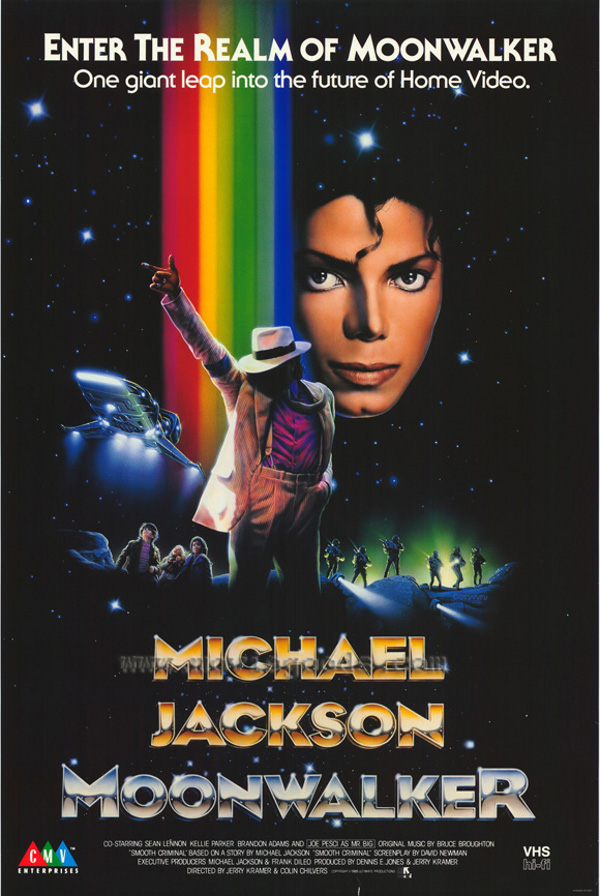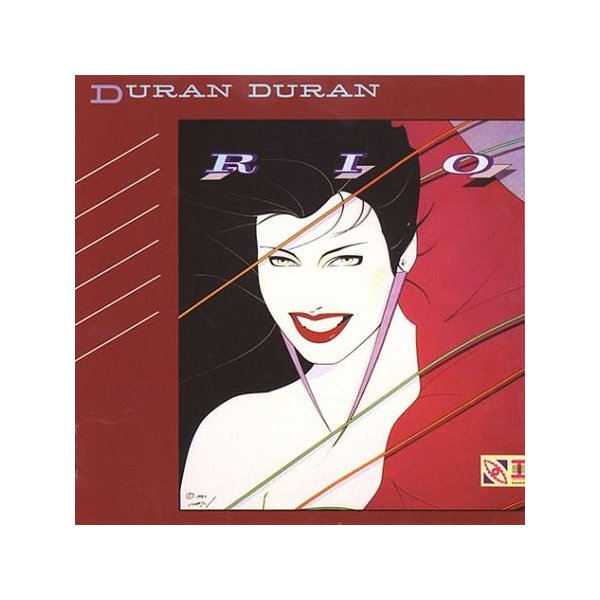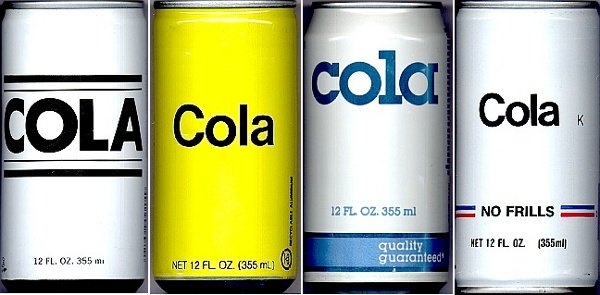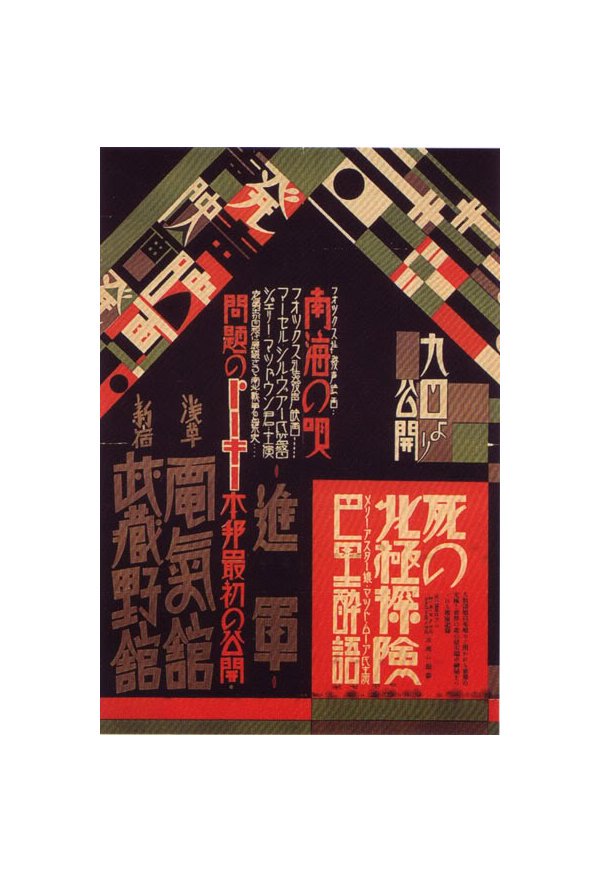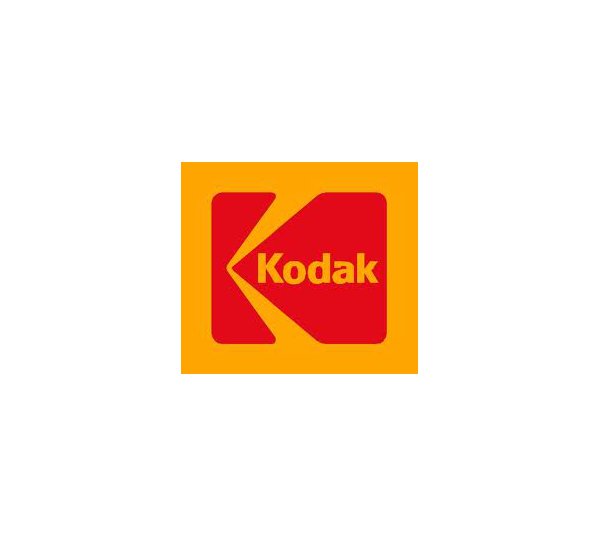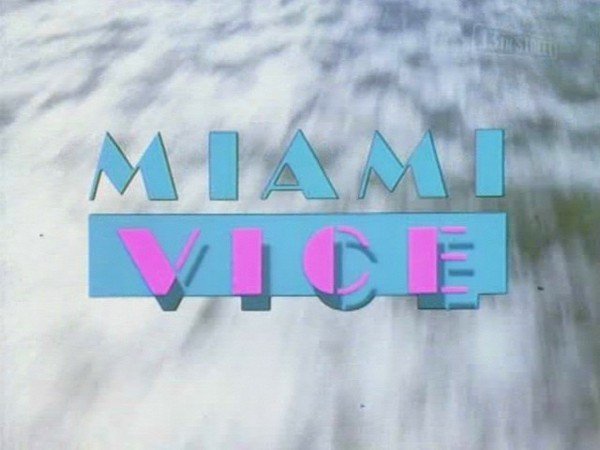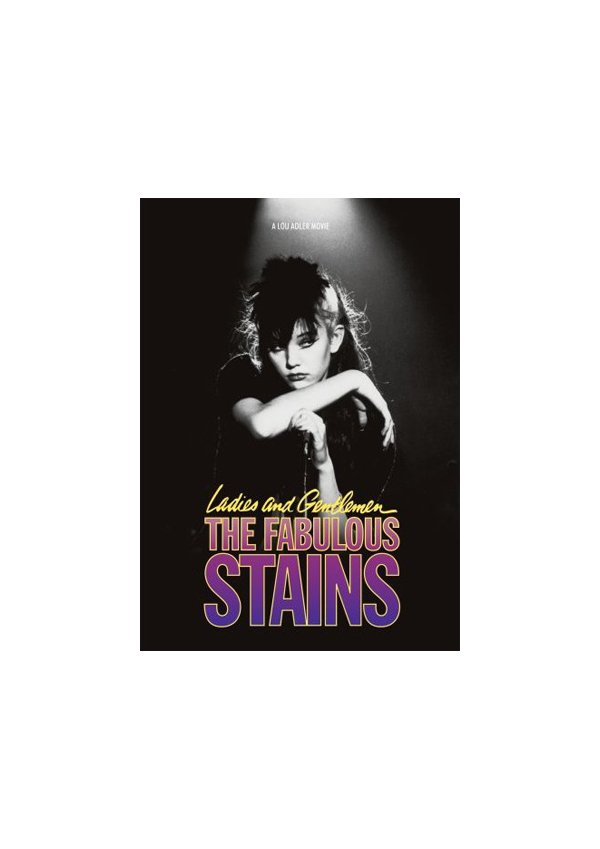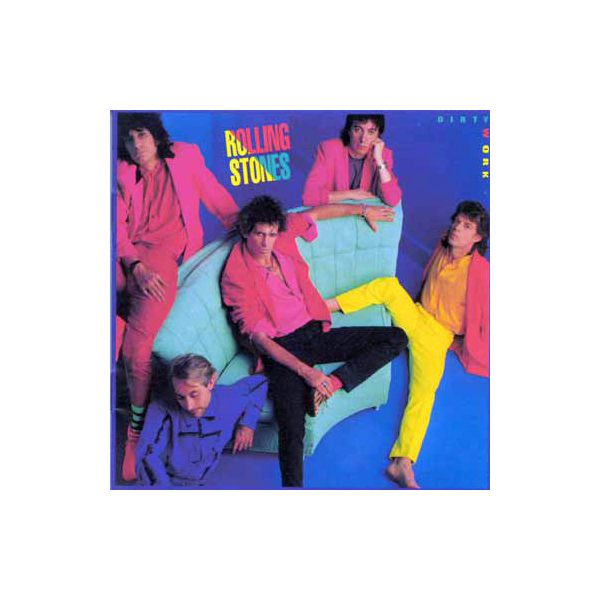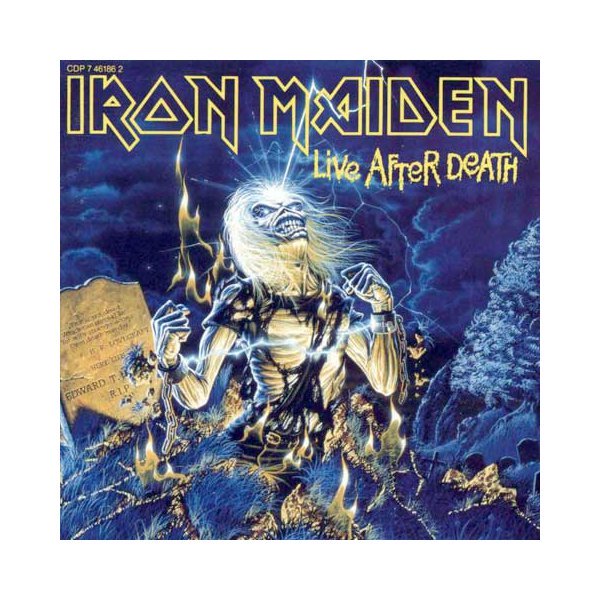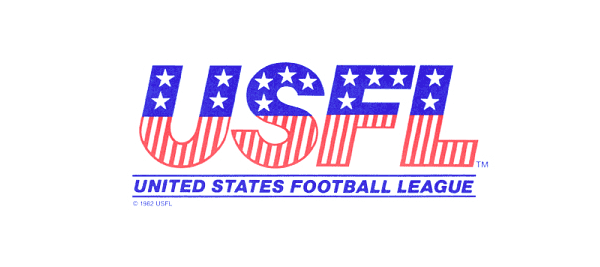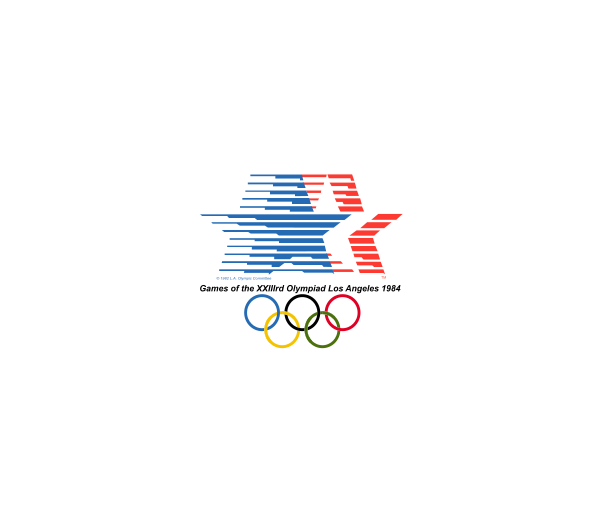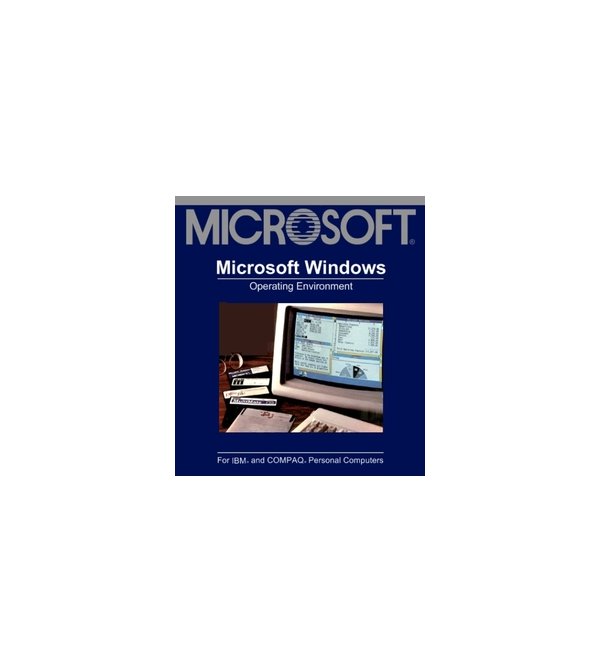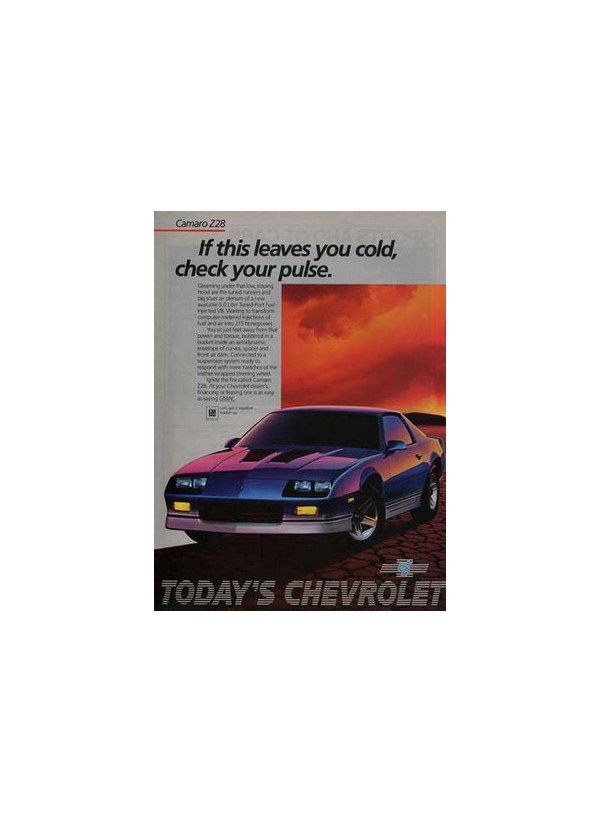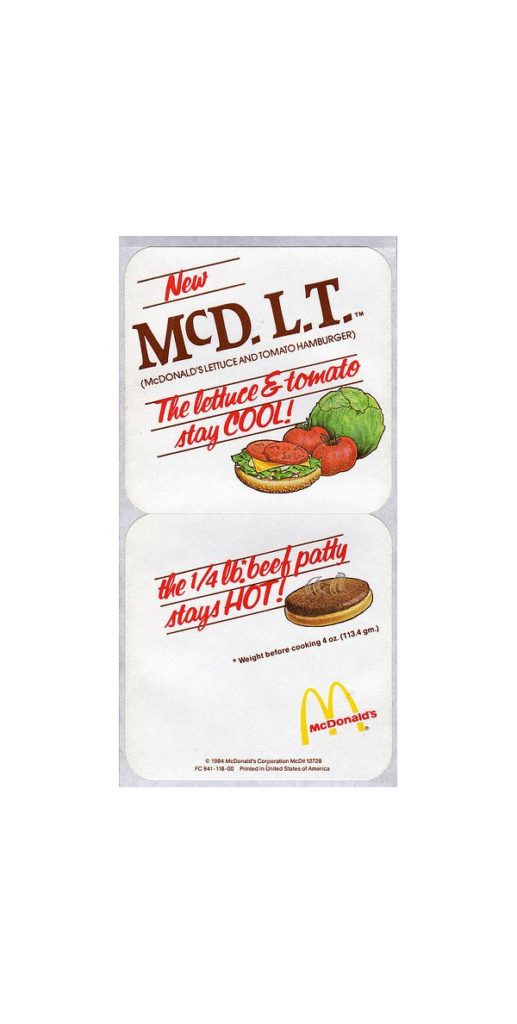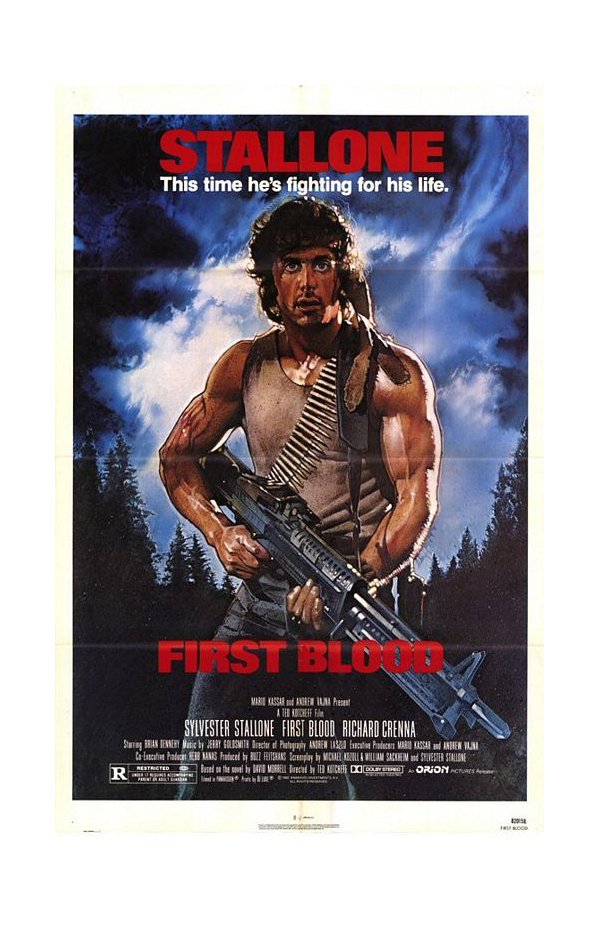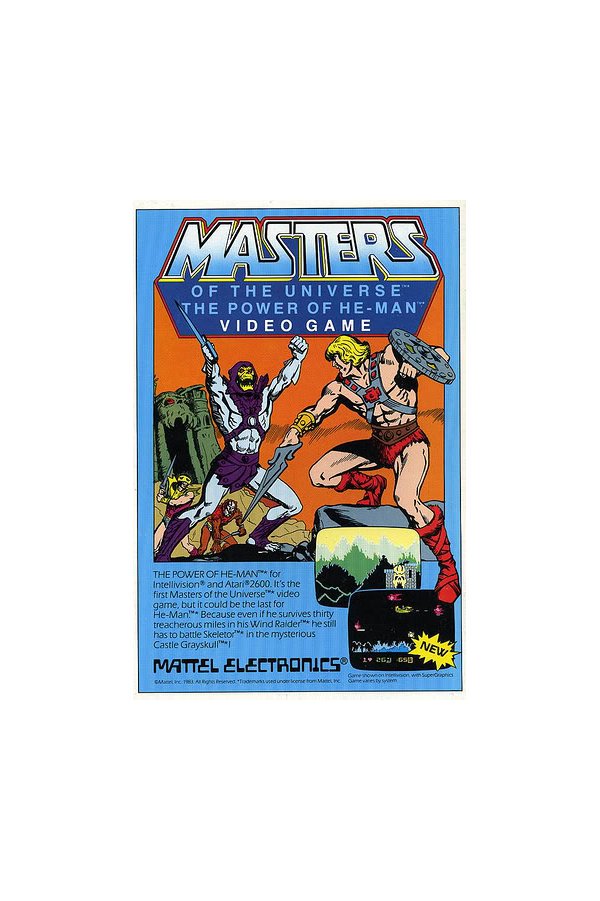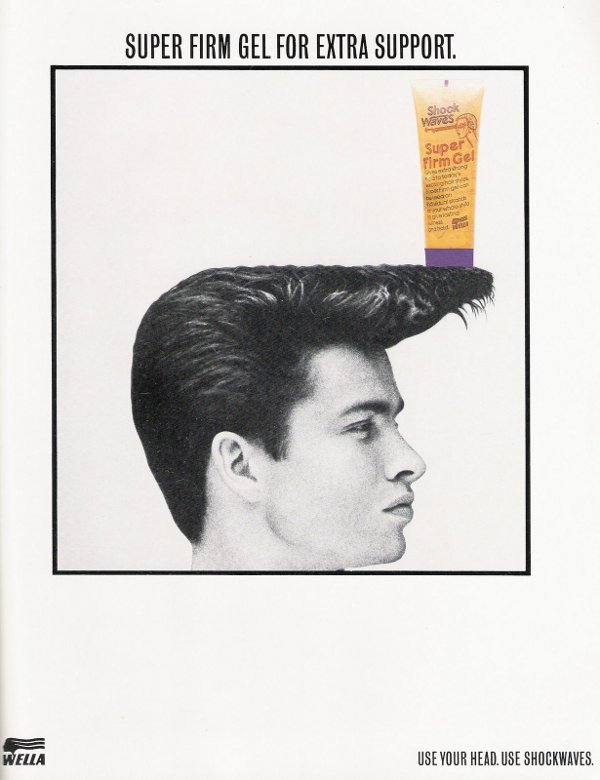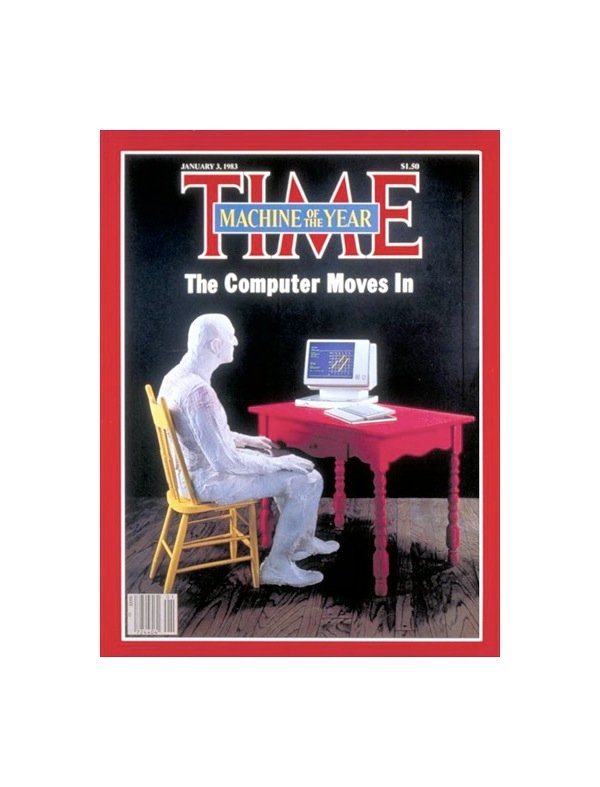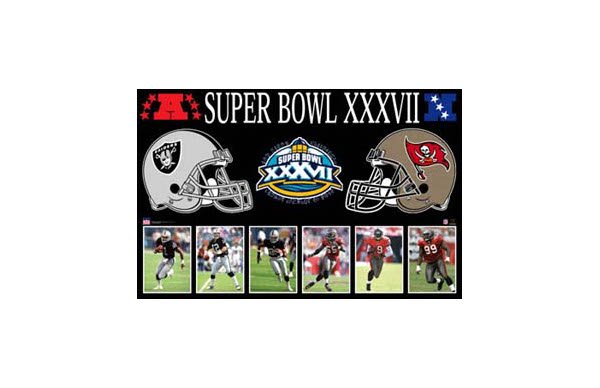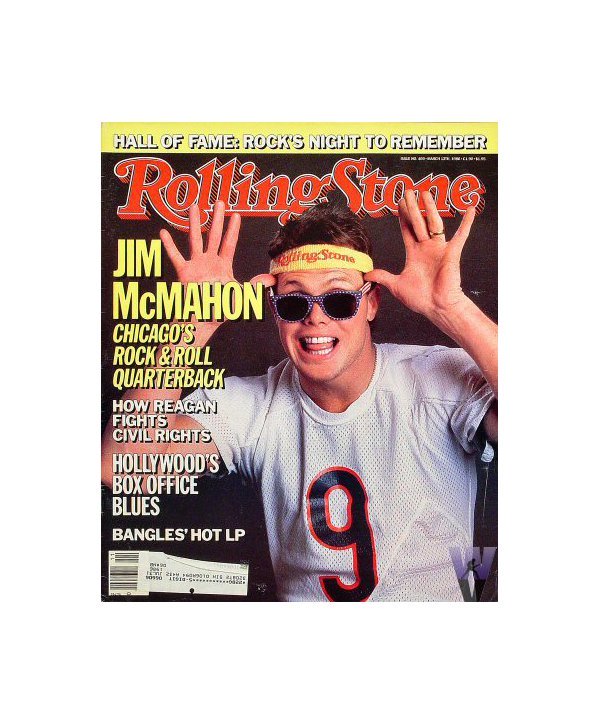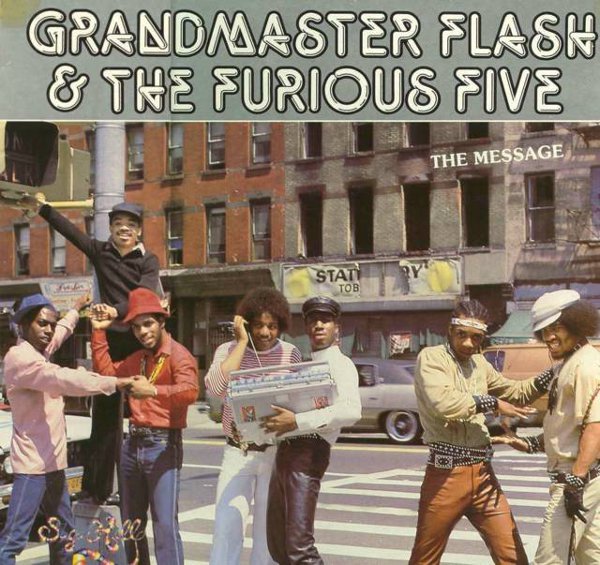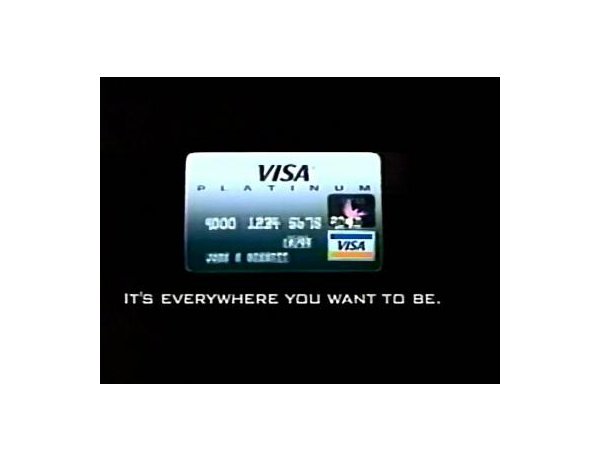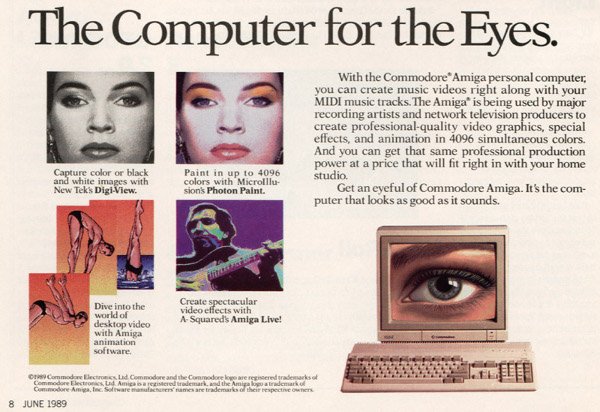Graphic Design and Typography
The 1980s were so totally tubular that it can be challenging to find authentic graphic design from that decade – so much of what is on the Internet is actually current and was only inspired by the ’80s. And why not? Carrying the brashness of ’70s graphic design over, the Me Decade was all about grabbing attention, with its bold, neon colors, jagged typography and hair-raising styles.
The ’80s saw the launch of such memorable ad campaigns as “Where’s the beef?” from Wendy’s, “Just do it” from Nike, “Be all that you can be” from the U.S. Army and “What would you do for a Klondike bar?” Urban culture became mainstream through movies such as “Breakin’” and “Krush Groove,” with the fashions and designs infiltrating themselves into pop culture and advertising.
What were some of your favorite campaigns to come out of the ’80s?
Note the disco text effect that carried over from the ’70s.
The “Just Do It” ad campaign, launched in 1988, was chosen by Advertising Age as one of the top five ad slogans of the 20th century.
Artist Patrick Nagel was perhaps best known for designing Duran Duran’s “Rio” album cover.
Inspiration for Dharma products in “Lost?”
Japanese graphic artists also turned toward brighter hues in the ’80s.
Kodak’s 1987 logo redesign.
The skin-ripping skull adorned many skateboards and hoodies back in the day.
The ubiquitous ’80s logo: blocky text in pastel colors.
This 1981 cult classic starred a very young Diane Lane.
Even the Rolling Stones couldn’t escape the trends of the decade.
Heavy metal of that decade tended toward shock and gore.
A lot of ’80s design incorporated the American flag in some way with stripes and red, white and blue.
The 1984 Summer Olympics in Los Angeles followed that same trend.
Microsoft introduced the Windows operating system in 1985 – note Microsoft is following the line trend in its name.
More of the popular “liney” text effect, like with the 1984 Olympics logo.
The short-lived McDLT was an environmental controversy with its extensive styrofoam packaging.
The phrase “just say no” was first uttered by First Lady Nancy Reagan in 1982.
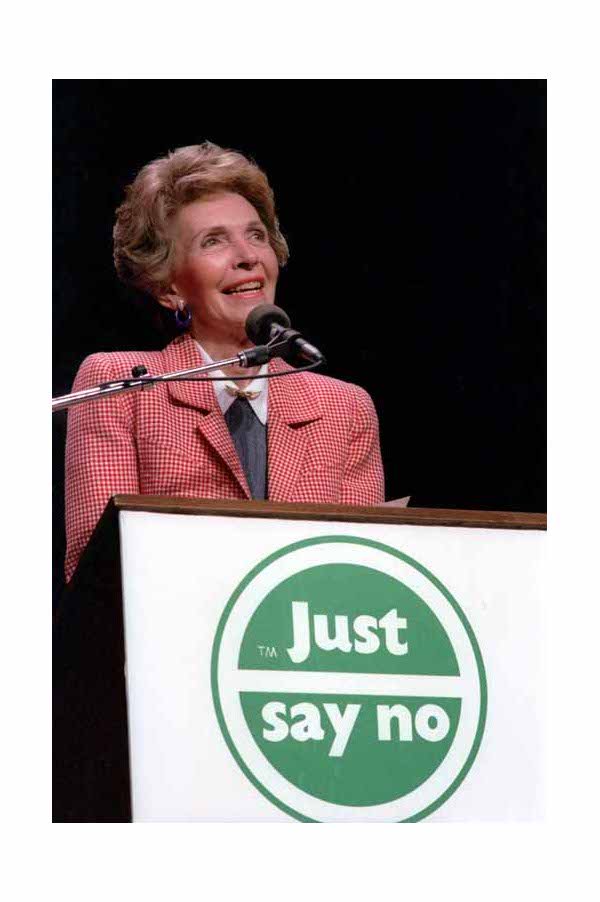
Co-founder Shawn Stussy used to scrawl his surname on his handcrafted surfboards with a marker.

Before becoming parody fodder, Sylvester Stallone received critical acclaim for “First Blood.”
The font for Mattel Electronics is so cliche 1980s.
The selective color stands up to the severe hairstyle.
Time magazine made curious use of selective color in this 1983 cover.
The Swashbuckler Bowl featured skulls and serif fonts. UPDATE: Totally wrong decade! Thanks to commenters for pointing out my error. Which Super Bowl of the 1980s would you include?
Rolling Stone’s font and header matched Jim McMahon’s headband.
The album cover font resembles neon tubing – a popular text effect of the decade.
In 1984, most Visa credit cards began to feature a hologram of a dove.
So much text in this ad – and all of it in a serif font.
Illustration
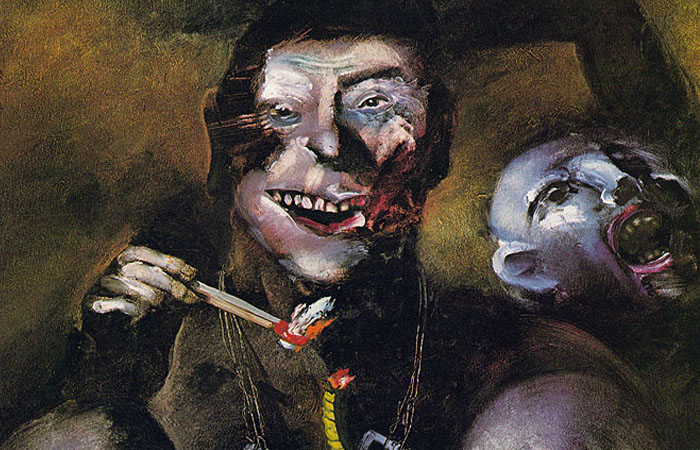
The 1980s were creative years in illustration. “Neo-Expressionist” artists like Marshall Arisman and Gary Panter shook the mildness out of magazine art with their scratched lines, splattered inks, jagged shapes, and implied violence. “The New Illustration” showed influences of punk rock attitude, while making social and cultural commentary. Crude or primitive drawing became more acceptable in the minds of some art directors, while most of the profession maintained the status quo of past decades.
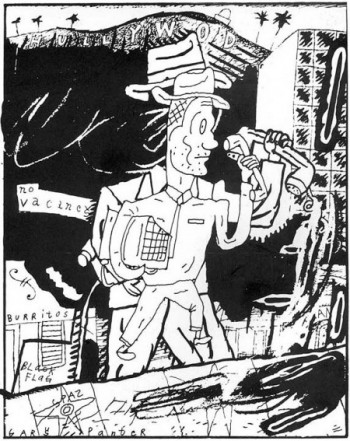
Gary Panter
Gary Panter and other comics artists rose from the underground into the light of mainstream publishing as comics attracted a wider audience. The extended length comic narrative surged forward with the The Dark Knight Returns by Frank Miller, a story that delved into the psychology of the most troubled of crime-fighting heroes, Batman, and led the way to other thoughtful and complex story-telling that would form the genre called the “graphic novel.”
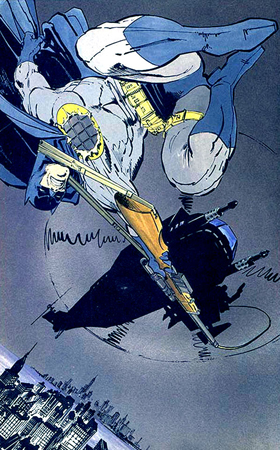
Frank Miller, graphic novel, The Dark Knight Returns, 1986
Beginning with the conceptual illustrations done for The New York Times in the 1970s, a symbolic and surrealistic illustration style became popular in the 1980s and 1990s in other areas of publishing. In advertising and marketing for businesses, in corporate annual reports, and in business and financial publications, concepts were being treated with solutions, which, although often creative, were of a common type. The businessman or woman, the office worker, and the investor were symbolized by a single generic figure interacting with a symbolic, concept-based environment that represented the company. The “corporate everyman” (or team of employees) was seen climbing ladders to attain goals, crossing half-built bridges to show perilous transitions, and facing many other metaphorical situations.
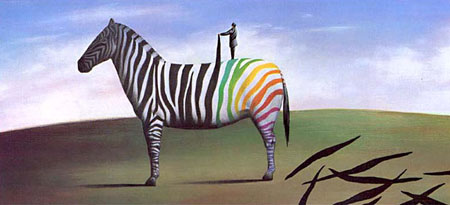
George Abe
There were lucrative markets in the favored business world of Reagan-era economics. Artists like Mark English, Fred Otnes, Bernie Fuchs and Robert Heindel earned large fees for the paintings they produced for corporations, institutions, and advertising clients. And, if they chose to, they could also function as fine artists by creating self-authored works on subjects of their choice and selling them as art for corporate offices for very substantial sums. This, along with editorial and book illustration assignments, allowed this first rank of American illustrators to live an envied lifestyle and to serve as role models for both financial and artistic success.
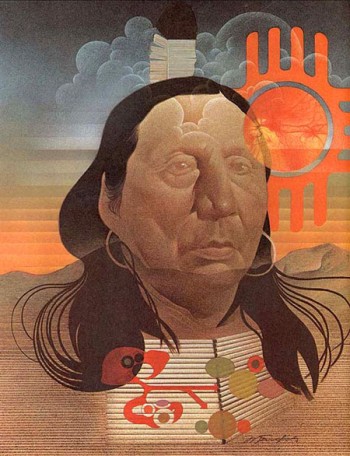
Mark English

Robert Heindel
Children’s book illustration continued to grow as a field in the 1980s and showed a wide range of styles and content. In a strong economy illustrators could conduct fully active careers solely on income from children’s publishers. Trina Schart Hyman, Nancy Burkholm Eckert, Chris van Allsburg, Barry Moser, Alice and Martin Provensen, Susan Jeffers, Mercer Mayer, and Tommy dePaola were among the most successful ones. And in this decade, for the first time in history, there were picture books being created by African-Americans about the African-American experience. These include Leo Dillon, of the illustrator team Leo and Diane Dillon (Ashanti to Zulu), Jerry Pinkney (Tales of Uncle Remus), and John Steptoe (Mufaro’s Beautiful Daughters). Steptoe’s career was cut short in 1989 when he died of the AIDS virus but Pinkney and the Dillons continue to create wonderful books today.
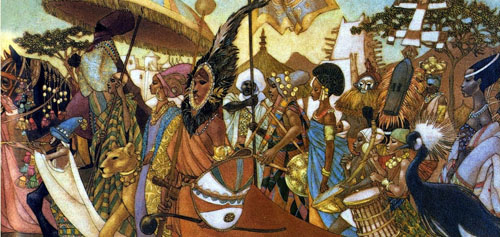
Leo and Diane Dillon, Ashanti to Zulu, 1977
Change was coming quickly in the illustration profession. For a hundred years, the art and business of illustration had been conducted in pretty much the same ways. The conventions of looking for work, getting a portfolio reviewed, promoting work, gaining commissions, and communicating with art directors were not much different for Howard Pyle than they were for Mark English. In this decade, when art school illustration programs were turning out young illustrators with brand new portfolios each spring, art directors were beginning to limit personal interviews. They came to prefer seeing artist’s representatives who could bring samples by multiple artists and were professional sales people, rather than interacting with eager artists seeking input and advice. Agencies and publishers instituted “drop-off” policies, where portfolios were reviewed only on a particular day of the week, and often by someone other than the art director, such as a designated “art buyer,” junior designer, or assistant. With fewer opportunities to have their work reviewed personally, artists began seeking these “reps,” who could more easily get into the doors of the agencies and publishers, while also seeking commissions, communicating assignments and sharing promotional costs. Artists without a rep were at a distinct disadvantage and in order to compete had to pay closer attention to marketing and promotion and spend more and more money on advertising. Occasional mailings to prospective clients had been the rule, but now illustrators were spending thousands of dollars for their own pages in new advertising annuals like American Showcase in the hope that art directors would see their work and get in touch. For the art directors, these annuals provided a huge menu of choices and became the primary way that artists or reps were selected. The most talented artists did well, and the less talented suffered discouraging losses and longer periods of downtime when commissions were scarce. The fax machine and new overnight delivery services all but replaced personal contact during the process of making an illustration, and artists communicated with their clients only by a voice on the telephone—if at all.
Then, in the mid-1980s, the greatest advance in communication technology since Gutenberg invented the printing press took place. The desktop computer was invented. With its revolutionary combination of software and hardware, it would completely alter the ways that designers worked and provided the promise of a dynamic new medium for illustrators.
Comics
Alan Moore: Miracle Man, Swamp Thing, V for Vendetta, (Dave Gibbons artist) Watchmen, Superman
Frank Miller: Daredevil, Elektra, Batman Year One, Dark Knight Returns, Sin City (Also mention Klaus Janson, David Mazzucchelli, and Lynn Varley)
Marv Wolfman/George Perez: Teen Titans and Crisis on Infinite Earths
Camelot 3000: Maxiseries
Chris Claremont/John Byrne: X-Men, Northstar (first openly gay super hero)
Independent Comics on the Rise: American Flagg, Groo, Comico, Teenage Mutant Ninja Turtles
Animation
Japanese Anime continues to accelerate but in unexpected ways: Voltron and Robotech
Syndicated animation becomes more popular than “Saturday Morning”: G.I Joe, Transformers, Thundercats, Care Bears, My Little Pony, He-Man, Teenage Mutant Ninja Turtles
The Simpsons: Longest running television show in America
Film
Directors
Stephen Spielberg – ET, The Color Purple
Ron Howard – Cocoon
Personalities
Film Score
Alan Silvestri – Back to the Future
Danny Elfman – Tim Burton Films More info
Special Effects
Rick Baker – American Werewolf in London
Theodor Pistek – (Costuming) Amadeus
John Bruno, Dennis Muren, Hoyt Yeatman – The Abyss
Cinematography
Stuart Craig and Gerard James (Art Direction) – Dangerous Liaisons
Screenwriting
John Patrick Shanley – Moonstruck
Tom Schulman – Dead Poets Society
Advertising
Ad Agency Consolidations
Two years later, WPP acquired Ogilvy Group which included Ogilvy & Matherin a bitter hostile takeover, the first in advertising history, in which agency founder David Ogilvy publicly attacked Mr. Sorrell.
Saatchi & Saatchi, which had acquired McCaffrey & McCall earlier in the decade, absorbed Dancer-Fitzgerald-Sample, Backer & Spielvogel and Ted Bates & Co. in a deal that also included Bates subsidiaries Campbell-Mithun and William Esty Co.
In 1986, Omnicom was created, merging Needham, Harper & Steers Advertising and Doyle Dane Bernbach into DDB Needham and maintaining Batten, Barton, Durstine & Osborn, the third agency in the deal, under its own name.
Of the top 15 U.S. agencies at the start of the decade, only Leo Burnett Co., Young & Rubicam, McCann-Erickson and Grey Advertising survived the 1980s with their ownership intact. With a recession that developed late in the decade, however, the agency “buying binge” slowed.
Financier Kohlberg Kravis Roberts & Co. scored the greatest leveraged buyout of the decade with its purchase of Nabisco for $25 billion, a deal that also included Standard Brands, which Nabisco had already absorbed. Philip Morris Cos. bought Kraft, Kodak bought Sterling Drug and Grand Metropolitan of England bought Pillsbury. Companies such as Kroger Foods fought against takeovers but found the battle expensive, and much of the cost was reflected in diminished ad spending.
Several companies that had long been international marketers?such as Coca-Cola Co., IBM Corp., General Motors Corp., Monsanto and McDonald’s Corp.?were joined by countless others seeking their share of the world market as they made international advertising part of their general advertising strategy.
Effects of technology
Cable TV had a profound impact in reshaping the TV industry during the decade. As cable channels prospered, they undermined the influence of traditional broadcast networks. By the early 1990s, the once-dominant broadcast networks saw their portion of the evening TV audience slip to less than 60%. Whereas ABC, NBC and CBS each claimed about 19% of the TV audience, “independent” TV and cable TV, as exemplified by CNN (launched in 1980) and MTV (1982), captured more than 40%.
In addition to cable TV, the VCR allowed viewers to manage, organize and control the programs available to them. In addition, remote controls gave TV viewers the ability to “zip” and “zap” their way through TV commercials. The term “zipping” was coined to describe the practice of using the remote control to change channels during commercials. Viewers could also “zap” commercials out of recorded programs by fast-forwarding through them, thus ignoring ad messages. Eventually, certain VCRs were marketed that could be programmed to automatically skip commercials, compounding the problem for advertisers.
Cable TV further contributed to the internationalization of advertising. CNN sold advertising worldwide, offering companies the ability to advertise their products to a worldwide audience.
A new form of electronic advertising, direct-response home shopping services, developed in the ’80s. Cable networks such as the Home Shopping Network (launched in 1982) and QVC (1986) sold discounted goods directly to viewers, who called in orders to telephone operators. Instead of purchasing airtime for advertising from cable operators, home-shopping networks paid cable operators a percentage of the profits from sales generated in their viewing area.
The infomercial, another new ad vehicle, became one of the fastest-growing areas in TV advertising. These 30-minute commercials often featured celebrities and appeared as news or informational programming; in reality, they were promotional pitches for all types of products.
In an effort to maximize profits and enhance ad effectiveness, agencies made a shift in the mid-1980s to 15-second TV spots, moving away from the earlier 30-second standard. The new :15s theoretically allowed advertisers to double the number of ads run and reduce the cost per ad, maintaining and often increasing revenue levels. The shorter spots posed a new creative challenge to the industry, which had to pack incentive to purchase and product information into a shorter message. They also drew critics, who claimed they were cluttering the airwaves.
Noteworthy advertising
Pepsi-Cola changed its slogan in the 1980s from “Pepsi generation” to “Choice of a new generation” with the help of BBDO and contracted with music icon Michael Jackson in one of the largest celebrity endorsement agreements in advertising history.
“Lunch Box,” for the California Raisins Advisory Board, featured hip Claymation raisins wearing sunglasses and shuffling to the 1960s hit tune “I Heard It Through the Grapevine.” Foote, Cone & Belding, San Francisco, was the agency behind the 1986 spot.
Memorable as well was the Cheer commercial in which a silent, deadpan presenter smudged a handkerchief and put it in a cocktail shaker with water, ice and a dash of the detergent. With an opera aria as background music, viewers saw that the hankie, of course, was spotless when pulled from the shaker.
The Energizer Bunny, ranked among the top icons in advertising history by Advertising Age, was introduced in 1989. The commercials, from Chiat/Day, were called the “ultimate product demo” because they showed the product’s unique selling proposition?long-lived batteries?in an inventive, fresh way. The Bunny first appeared in three :15s, sending up coffee, wine and decongestant spots.
Perhaps one of the best commercials?and marketing strategies?of all time was the Orwellian Apple Macintosh advertisement entitled “1984,” which launched the Macintosh revolution. The one-time airing of the 60-second spot during the 1984 Super Bowl became a watershed of American advertising.
That same year, a senior citizen named Clara Peller became a star when she appeared in a now-classic Wendy’s commercial (“Where’s the Beef?”), produced by Dancer-Fitzgerald-Sample and directed by Joe Sedelmaier.
In 1986, JWT introduced “Herb,” a man who had never tried a Whopper, for Burger King. Viewers were urged to be on the lookout for Herb in Burger King outlets, but the campaign was dropped four months later. Advertising Age later termed it “the most elaborate advertising flop of the decade.”
In reaction to the inroads that foreign automakers were making in the U.S. market, U.S. advertisers responded with increasing defensiveness. Ads told the American people, “At Ford quality is job one” and “GM puts quality on the road.”
Other noteworthy campaigns from the ’80s included E&J Gallo Winery’s “plain folks” approach from Hal Riney & Partners for Bartles & Jaymes wine cooler; Lee Iacocca’s debut in Kenyon & Eckhardt-produced spots for Chrysler; Ally & Gargano’s “fast-talker” spots for Federal Express; Coca-Cola’s “Mean Joe Greene” spot from McCann-Erickson; Della Femina, Travisano & Partners’ exaggerating Joe Isuzu character for automaker Isuzu; and Calvin Klein’s spots tagged, “Know what comes between me and my Calvins? Nothing,” featuring teen-age spokesmodel Brooke Shields. At the end of the decade, Nissan grabbed attention with its “rocks & trees” campaign from Hill, Holliday, Connors, Cosmopulos for its luxury Infinity, which never showed the car.
Politics, critics, milestones
No discussion of advertising in the 1980s would be complete without noting the high priority placed on TV advertising by the re-election campaign of President Ronald Reagan. The Reagan “feel good” spot for the 1984 campaign, handled by the re-election team’s ad hoc Tuesday Team and written by Hal Riney, included a number of patriotic vignettes on the theme “It’s morning again in America.”
In his handling of the 1984 campaign, President Reagan dramatically altered the traditional relationship between the media and politics. He and his aides staged news events for maximum media coverage, timed announcements to be seen by large TV audiences and demonstrated an unprecedented understanding of the power of visual media.
The 1980s were marked by some serious criticism and challenges for the advertising industry. For example, long-held assumptions about advertising’s effectiveness were challenged by Gerald Tellis, who put together a sophisticated statistical model and concluded that people are relatively unmoved by TV advertisements in making brand choices, especially with regard to everyday products. His 1983-84 examination of consumer purchasing patterns generated discussion and concern. The research continued into the 1990s.
Government deregulation under President Reagan ushered in a philosophy of “less government” and more free marketplace decision-making and autonomy. During the Reagan presidency, a political and economic environment was created that allowed for mergers and acquisitions and also tolerated tremendous corporate media growth. In 1986, General Electric Corp. was allowed to purchase RCA Corp., which already owned NBC. In 1989, Time bought Warner Communications and formed Time-Warner, bringing together under a single corporate umbrella an empire consisting of magazines, motion picture and TV production companies, cable TV networks, book publishers, record companies and a major comic books company.
Other significant milestones of the 1980s include the introduction of Rely tampons by Procter & Gamble Co. in May 1980 and the subsequent withdrawal of the product four months later when the U.S. Centers for Disease Control linked its use to toxic shock syndrome. Two years later Tylenol capsules were pulled from shelves across the U.S. after an incidence of product tampering in Chicago that resulted in seven deaths.
In addition, the decade saw the sudden rise of blue jeans into the realm of high fashion with such brands as Sergio Valente, Bon Jour, Calvin Klein, Gloria Vanderbilt and Jordache. Hershey’s Reese’s Pieces saw sales leap 70% in 1982 after its exposure via product placement in the movie “E.T. the Extra-Terrestrial.”
Caffeine-free soft drinks were introduced in 1983, and AT&T Corp. divested itself of its local phone companies, which became seven independent regional companies known collectively as the “Baby Bells.” ACNielsen Corp. was sold to Dun & Bradstreet Corp. in 1984, and Nike signed Chicago Bulls rookie Michael Jordan in a deal said to cover five years for $2.5 million. The following year, Capital Cities Communications acquired ABC for $3.5 billion. In response to the spread of AIDS, which by mid-decade had become an epidemic, magazines such as Bride’s, Family Circle, Parents and Vogue began accepting ads for condoms in 1986.
In 1986, “The Cosby Show” commanded a record $400,000 for a 30-second spot. Oat bran became a sensation in 1989 when research suggested it might help reduce cholesterol. Kellogg, General Mills, Quaker, Nabisco, Post and even Mrs. Field’s competed for their share of the oat bran market.
